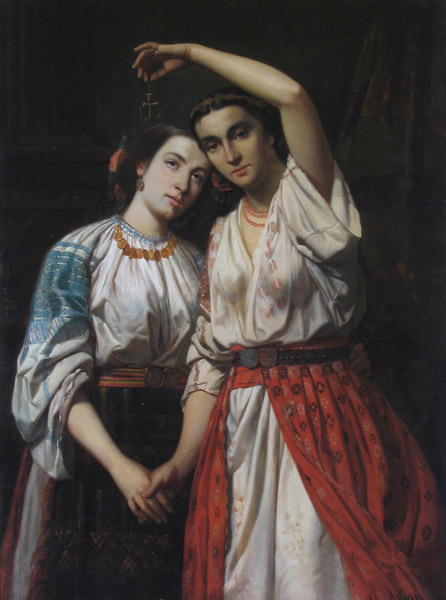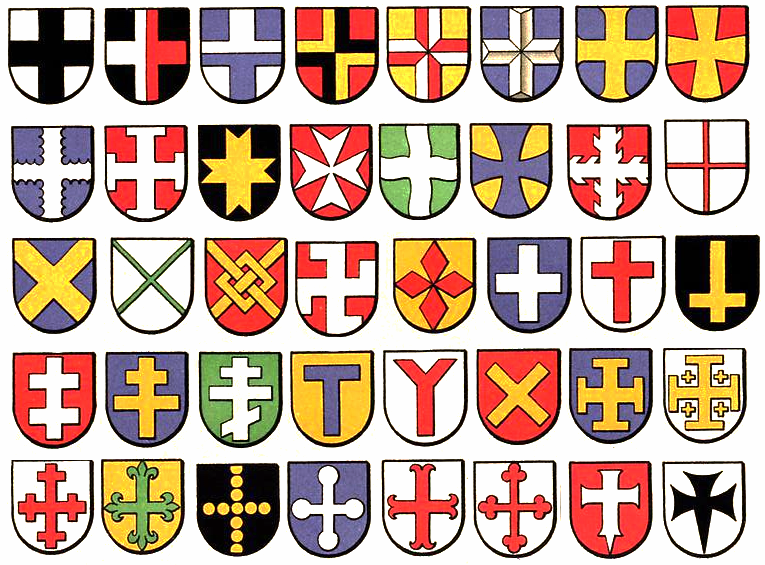|
Star Of Romania
The Order of the Star of Romania (Romanian: ''Ordinul Steaua României'') is Romania's highest civil Order and second highest State decoration after the Order of Michael the Brave. It is the oldest Order of Romania. It is awarded by the President of Romania, and has six grades, from lowest to the highest: Knight, Officer, Commander, Grand Officer, Grand Cross, and Grand Cross with Collar. History In 1863, Alexandru Ioan Cuza, the Domnitor of the United Principalities of Moldavia and Wallachia, asked the Romanian representative to Paris to contact the then well-known jewellery house Krétly, to manufacture a state decoration. Krétly presented a model, which was immediately accepted by the domnitor, and based on his agreement, 1,000 pieces of the order were made. It was decided that the order would have five ranks: Knight (''Cavaler''), Officer (''Ofițer''), Commander (''Comandor''), Grand Officer (''Mare Ofițer''), and Grand Cross (''Mare Cruce''). Unlike all other decorations ... [...More Info...] [...Related Items...] OR: [Wikipedia] [Google] [Baidu] |
United Principalities Of Moldavia And Wallachia
The United Principalities of Moldavia and Wallachia (), commonly called United Principalities or Wallachia and Moldavia, was the personal union of the Principality of Moldavia and the Principality of Wallachia. The union was formed on when Alexandru Ioan Cuza was elected as the '' Domnitor'' (Ruling Prince) of both principalities. Their separate autonomous vassalage in the Ottoman Empire continued with the unification of both principalities. On , Moldavia and Wallachia formally united to create the Romanian United Principalities, the core of the Romanian nation state. In February 1866, Prince Cuza was forced to abdicate and go into exile by a political coalition led by the Liberals; the German prince Karl of Hohenzollern-Sigmaringen was offered the Throne and, on he entered Bucharest for the first time. In July the same year, a new constitution came into effect, giving the country the name of Romania; internationally, this name was used only after 1877, since at the time it ... [...More Info...] [...Related Items...] OR: [Wikipedia] [Google] [Baidu] |
List Of Romanian Foreign Ministers
The Romanian Ministry of Foreign Affairs () is the ministry responsible for external affairs of the Government of Romania, Romanian Government. The current foreign minister is Emil Hurezeanu. List of ministers of foreign affairs (1862–1989) List of ministers of foreign affairs (1989–present) Notes Romania used the Julian calendar until 1919, but all dates are given in the Gregorian calendar. The following party abbreviations are used: Additionally, the political stance of prime ministers prior to the development of a modern party system is given by C (Conservative), MC (Moderate Conservative), RL (Radical Liberal) and ML (Moderate Liberal). Interim officeholders are denoted by ''italics''. For those who held office multiple times, their rank of service is given by a Roman numeral. References External links MAE.roGUV.ro {{DEFAULTSORT:Ministry Of Foreign Affairs (Romania) Ministry of Foreign Affairs (Romania), Government ministries of Romania, F ... [...More Info...] [...Related Items...] OR: [Wikipedia] [Google] [Baidu] |
Mihail Kogălniceanu
Mihail Kogălniceanu (; also known as Mihail Cogâlniceanu, Michel de Kogalnitchan; September 6, 1817 – July 1, 1891) was a Romanian Liberalism, liberal statesman, lawyer, historian and publicist; he became Prime Minister of Romania on October 11, 1863, after the United Principalities, 1859 union of the Danubian Principalities under ''Domnitor'' Alexandru Ioan Cuza, and later served as List of Romanian Foreign Ministers, Foreign Minister under Carol I of Romania, Carol I. He was several times List of Romanian Ministers of the Interior, Interior Minister under Cuza and Carol. A polymath, Kogălniceanu was one of the most influential Romanian intellectuals of his generation. Siding with the moderate Liberalism and radicalism in Romania, liberal current for most of his lifetime, he began his political career as a collaborator of List of rulers of Moldavia, Prince Mihail Sturdza, while serving as head of the Iași National Theatre, Iași Theater and issuing several publications t ... [...More Info...] [...Related Items...] OR: [Wikipedia] [Google] [Baidu] |
Ottoman Empire
The Ottoman Empire (), also called the Turkish Empire, was an empire, imperial realm that controlled much of Southeast Europe, West Asia, and North Africa from the 14th to early 20th centuries; it also controlled parts of southeastern Central Europe, between the early 16th and early 18th centuries. The empire emerged from a Anatolian beyliks, ''beylik'', or principality, founded in northwestern Anatolia in by the Turkoman (ethnonym), Turkoman tribal leader Osman I. His successors Ottoman wars in Europe, conquered much of Anatolia and expanded into the Balkans by the mid-14th century, transforming their petty kingdom into a transcontinental empire. The Ottomans ended the Byzantine Empire with the Fall of Constantinople, conquest of Constantinople in 1453 by Mehmed II. With its capital at History of Istanbul#Ottoman Empire, Constantinople (modern-day Istanbul) and control over a significant portion of the Mediterranean Basin, the Ottoman Empire was at the centre of interacti ... [...More Info...] [...Related Items...] OR: [Wikipedia] [Google] [Baidu] |
National Museum Of Art Of Romania
The National Museum of Art of Romania () is located in the Royal Palace in Revolution Square, central Bucharest. It features collections of medieval and modern Romanian art, as well as the international collection assembled by the Romanian royal family. The exhibition "Shadows and Light" ran from 15 July to 2 October 2005. With four centuries of French art, it was the largest exhibition of French painting in Central and Eastern Europe since 1945. 77 works were exhibited, including masterpieces by painters such as Poussin, Chardin, Ingres, David, Delacroix, Corot, Cézanne, Matisse, Picasso, and Braque. History The museum was damaged during the 1989 Romanian Revolution that led to the downfall of Nicolae Ceaușescu. In 2000, part of the museum reopened to the public, housing the modern Romanian collection and the international collection; the comprehensive Medieval art collection, which now features works salvaged from monasteries destroyed during the Ceaușescu era, ... [...More Info...] [...Related Items...] OR: [Wikipedia] [Google] [Baidu] |
Wallachia
Wallachia or Walachia (; ; : , : ) is a historical and geographical region of modern-day Romania. It is situated north of the Lower Danube and south of the Southern Carpathians. Wallachia was traditionally divided into two sections, Muntenia (Greater Wallachia) and Oltenia (Lesser Wallachia). Dobruja could sometimes be considered a third section due to its proximity and brief rule over it. Wallachia as a whole is sometimes referred to as Muntenia through identification with the larger of the two traditional sections. Wallachia was founded as a principality in the early 14th century by Basarab I after a rebellion against Charles I of Hungary, although the first mention of the territory of Wallachia west of the river Olt dates to a charter given to the voivode Seneslau in 1246 by Béla IV of Hungary. In 1417, Wallachia was forced to accept the suzerainty of the Ottoman Empire; this lasted until the 19th century. In 1859, Wallachia united with Moldavia to form the Un ... [...More Info...] [...Related Items...] OR: [Wikipedia] [Google] [Baidu] |
Moldavia
Moldavia (, or ; in Romanian Cyrillic alphabet, Romanian Cyrillic: or ) is a historical region and former principality in Eastern Europe, corresponding to the territory between the Eastern Carpathians and the Dniester River. An initially independent and later autonomous state, it existed from the 14th century to 1859, when it united with Wallachia () as the basis of the modern Romanian state; at various times, Moldavia included the regions of Bessarabia (with the Budjak), all of Bukovina and Hertsa region , Hertsa. The region of Pokuttya was also part of it for a period of time. The Moldavia (region of Romania) , western half of Moldavia is now part of Romania, the eastern side belongs to the Moldova , Republic of Moldova, and the Chernivtsi Oblast , northern and Budjak , southeastern parts are territories of Ukraine. Name and etymology The original and short-lived reference to the region was ''Bogdania'', after Bogdan I, the founding figure of the principality. The name ... [...More Info...] [...Related Items...] OR: [Wikipedia] [Google] [Baidu] |
Cross (heraldry)
A number of cross symbols were developed for the purpose of the emerging system of heraldry, which appeared in Western Europe in about 1200. This tradition is partly in the use of the Christian cross an emblem from the 11th century, and increasingly during the age of the Crusades. Many cross variants were developed in the classical tradition of heraldry during the late medieval and early modern periods. Heraldic crosses are inherited in modern iconographic traditions and are used in numerous national flags. History The Christian cross emblem (Latin cross or Greek cross) was used from the 5th century, deriving from a Tau Cross, T-shape representing the gibbet (''stauros'', ''crux'') of the crucifixion of Jesus in use from at least the 2nd century. The globus cruciger and the staurogram is used in Byzantine coins and seals during the Byzantine Empire under the Heraclian dynasty, Heraclian period (6th century). Under the Byzantine Empire under the Heraclian dynasty, Heraclian dynasty ... [...More Info...] [...Related Items...] OR: [Wikipedia] [Google] [Baidu] |
Maltese Cross
The Maltese cross is a cross symbol, consisting of four " V" or arrowhead shaped concave quadrilaterals converging at a central vertex at right angles, two tips pointing outward symmetrically. It is a heraldic cross variant which developed from earlier forms of eight-pointed crosses in the 16th century. Although chiefly associated with the Knights Hospitaller (Order of St. John, now the Sovereign Military Order of Malta), and by extension with the island of Malta, it has come to be used by a wide array of entities since the early modern period, notably the Order of Saint Stephen, the city of Amalfi, the Polish Order of the White Eagle (1709), the Prussian order ''Pour le Mérite'' (1740), and the Bavarian Military Merit Order (1866). Unicode defines a character named "Maltese cross" in the Dingbats range at code point U+2720 (✠); however, most computer fonts render the code point as a cross pattée. History The Knights Hospitaller during the Crusades used a p ... [...More Info...] [...Related Items...] OR: [Wikipedia] [Google] [Baidu] |
Légion D'honneur
The National Order of the Legion of Honour ( ), formerly the Imperial Order of the Legion of Honour (), is the highest and most prestigious French national order of merit, both military and Civil society, civil. Currently consisting of five classes, it was originally established in 1802 by Napoleon, Napoleon Bonaparte, and it has been retained (with occasional slight alterations) by all later French governments and regimes. The order's motto is ' ("Honour and Fatherland"); its Seat (legal entity), seat is the Palais de la Légion d'Honneur next to the Musée d'Orsay, on the left bank of the Seine in Paris. Since 1 February 2023, the Order's grand chancellor has been retired General François Lecointre, who succeeded fellow retired General Benoît Puga in office. The order is divided into five degrees of increasing distinction: ' (Knight), ' (Officer), ' (Commander (order), Commander), ' (Grand Officer) and ' (Grand Cross). History Consulate During the French Revolution, all ... [...More Info...] [...Related Items...] OR: [Wikipedia] [Google] [Baidu] |







